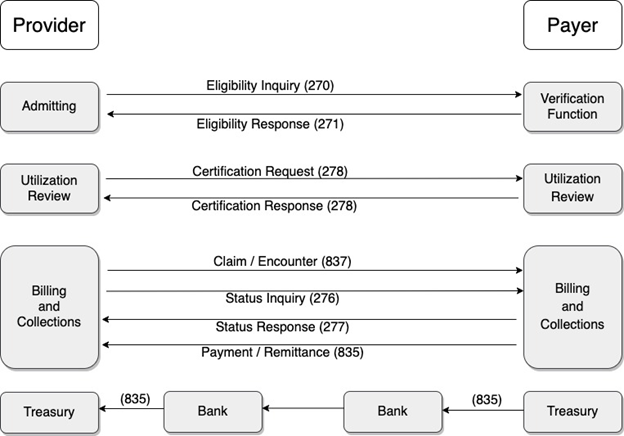Working: 8.00am - 5.00pm
Working: 8.00am - 5.00pm
Electronic data interchange (EDI) is the automated exchange of business documents between organizations. Daily business workflows require the exchange of documents like invoices, purchase orders, and shipping forms. Traditionally, paper-based documents or emails with attachments are shared between company representatives, who then manually process and fill the document data in their enterprise data systems. EDI technology automates these workflows so that digital systems can share and process documents across organizational boundaries without human involvement. Organizations can connect IT systems to others in their B2B network to save time and eliminate errors from manual processing.
Invoicing, processing purchase orders, and data entry are time-consuming in a non-EDI environment. With EDI, you can use low-code environments to easily automate common file processing and sharing steps, saving time and effort. EDI also eliminates the delays that are associated with
Because of EDI’s automatic processing, you can avoid manual data-entry errors. EDI can also help with the detection of errors and data anomalies in documents. A higher accuracy rate in documents further adds to data processing efficiency with this method.
With EDI, you can better control user access and authentication. EDI uses a combination of authentication and encryption to control who can access certain files. The electronic system is much more secure than traditional paper-first methods.
With EDI, you can better control user access and authentication. EDI uses a combination of authentication and encryption to control who can access certain files. The electronic system is much more secure than tr aditional paper-first methods.
A point-to-point or direct EDI connection connects two business systems with secure protocols
The value-added network (VAN) method uses a third-party network that oversees the data transmission process
EDI software commonly uses a mailbox paradigm to facilitate document exchange and batch processing. Secure internet
protocols such as Simple Object Access Protocol (SOAP), Secure File Transfer Protocol (SFTP), and HTTPS-based protocols such
as AS2 are used to transmit EDI documents. Additionally, communication standards governed by various organizations—such as
Accredited Standards Committee X12, Peppoi, and ODETTE—ensure a baseline level of data governance and enable high data quality
in EDI transactions.
EDI software can also combine two or more data segments to provide greater context in the document. For example, EDI can combine the data elements ITEMQUANTITY and ITEMDESCRIPTION into ORDERLINE to comprehensively describe the items and quantities in an order. Data combinations provide richer context and streamline the structure of EDI documents.

The first step requires a business to acquire and set up any EDI hardware and software components. These aspects manage transmission, integration, translation, and pathway mapping for EDI documents. EDI software ensures that any business documents are converted into the correct format. Common software components include:
• EDI mapping software that takes fields in a file, such as names and addresses, and then transfers them into standardized documents
• Batch enveloping and de-enveloping software for senders and receivers to receive, wrap, and unwrap transactions
• Message routing software to send messages, deliver them to the correct recipient addresses, and ensure that the message
has a compatible format for the destination address
Typically, this step also involves setting up and connecting to VANs, which provide reliable and secure transfer pathways. If you want to manage EDI internally, you must ensure that you have the required hardware, such as network equipment, storage, and servers.
After you lay the technological foundations for your EDI system, you must connect to business partners. Because you’re processing and exchanging documents with these trading partners, you must implement EDI standards that facilitate a safe and secure connection. Different industries and regions can each favor a distinct EDI standard format.
Your EDI system must adhere to your industry's required data protection regulations and standards. If any standards that you use have an update, you must adjust your system to maintain compliance. Equally, if your trading partners decide to change the standards they follow, you should be aware of their new specifications and be able to accommodate them.
The first step requires a business to acquire and set up any EDI hardware and software components. These aspects manage transmission, integration, translation, and pathway mapping for EDI documents. EDI software ensures that any business documents are converted into the correct format. Common software components include:
• EDI mapping software that takes fields in a file, such as names and addresses, and then transfers them into standardized documents
• Batch enveloping and de-enveloping software for senders and receivers to receive, wrap, and unwrap transactions
• Message routing software to send messages, deliver them to the correct recipient addresses, and ensure that the message
has a compatible format for the destination address
Typically, this step also involves setting up and connecting to VANs, which provide reliable and secure transfer pathways. If you want to manage EDI internally, you must ensure that you have the required hardware, such as network equipment, storage, and servers.

